- Home
- John Grisham
The Innocent Man Page 12
The Innocent Man Read online
Page 12
Chapter 13
Once the Oklahoma courts were finished with Ron's case and the date of execution was set, his attorneys hustled to federal court and began the next stage of appeals. The proceedings are known as habeas corpus-Latin for "you should have the body. " A writ for habeas corpus required that an inmate be brought before the court to determine the legality of his detention.
His case was assigned to Janet Chesley, a lawyer with the Indigent Defense System in Norman. Janet had extensive experience with habeas work and was accustomed to the frenetic pace of filing last-minute motions and appeals while watching the clock race toward an execution. She met with Ron, explained the process, and assured him he would get a stay. In her work such conversations were not unusual, and her clients, though understandably jittery, always came to trust her. The execution date was serious, but no one was put to death until the habeas appeals had been exhausted.
But Ron was different. The formal pronouncement of a date with death had pushed him even deeper into insanity. He was counting the days, unable to believe Janet's promises. The clock had not stopped. The death chamber was waiting.
A week went by, then two. Ron spent much time in prayer and Bible study. He also slept a lot and stopped screaming. His drugs were being liberally dispensed. The Row was quiet, and waiting. The other inmates missed nothing and wondered if the state would really execute someone as insane as Ron Williamson.
Three weeks went by.
The U. S. District Court for the Eastern District of Oklahoma is in Muskogee. In 1994, there were two judges, neither of whom was particularly fond of habeas corpus appeals or jailhouse lawsuits. They came in by the truckload. Every prisoner had issues and complaints; most claimed innocence and abuse. The death row boys had real lawyers, some from big firms working pro bono, and the briefs were thick and creative and had to be reckoned with. The general population prisoners were usually represented by themselves, with no shortage of advice from the writ writers who held sway in the law libraries and sold their opinions for cigarettes. If the inmates weren't filing habeas appeals, they were filing lawsuits over bad food, cold showers, mean guards, tight handcuffs, lack of sunlight. The list was long.
Most prisoner suits lacked merit and were dismissed outright, then sent to the Tenth Circuit Court of Appeals in Denver, home base for the sprawling federal district that included Oklahoma.
The habeas corpus appeal filed by Janet Chesley was randomly assigned to Judge Frank Seay, a Jimmy Carter appointee who took the bench in 1979. Judge Seay was from Seminole, and prior to his federal appointment he had served for eleven years as the trial judge in the Twenty-second District, which included Pontotoc County. He was familiar with the courthouse there, and the town and its lawyers.
In May 1971, Judge Seay had driven to the village of Asher and delivered a high school commencement speech. One of the seventeen graduates was Ron Williamson. After fifteen years on the bench, Judge Seay had little patience with the habeas corpus appeals that landed in his office. The Williamson petition arrived there in September 1994, just a few days before the execution. He suspected-in fact he knewthat the death penalty lawyers often waited until the last possible moment to file their petitions so that he, and other federal judges, would be forced to grant stays while the paperwork got sorted out. He often wondered what the poor convict was going through, sweating the hours on death row while his lawyers engaged in a bit of brinksmanship with a federal judge.
But it was good lawyering, and though Judge Seay understood it, he still didn't like the process. He'd granted a few stays, but never a new trial in a habeas corpus matter. As always, the Williamson petition was first read by Jim Payne, a U. S. magistrate in the federal court office. Payne was known to have conservative leanings and a similar dislike for habeas work, but he was also highly regarded because of his innate fairness. It had been his duty for many years to plow through each habeas corpus filing and search for valid claims, which, though rare, did exist often enough to keep the reading interesting.
To Jim Payne, the job was crucial. If he missed something buried in the voluminous briefs and transcripts, then an innocent man might be executed.
Janet Chesley's petition was so well written that it captured his attention in the first paragraph, and by the time he finished it, he had some doubts about the fairness of Ron's trial. Her arguments centered on the issues of inadequate defense counsel, mental competency, and the unreliability of hair evidence.
Jim Payne read the petition at home, at night, and when he returned to the office the following morning, he met with Judge Seay and recommended a stay. Judge Seay had great respect for his magistrate, and after a long discussion about the Williamson petition he agreed to stop the execution.
After watching the clock and praying fervently for twenty-three days, Ron was informed that his execution had been delayed indefinitely. His brush with death had taken him to within five days of getting the needle.
Jim Payne passed the habeas petition on to his law clerk, Gail Seward, who read it and agreed that an in-depth review was called for. He then gave it to the office rookie, a law clerk by the name of Vicky Hildebrand, who, because of her complete lack of seniority, had been assigned the unofficial title of "death penalty clerk. " Vicky had been a social worker before law school, and she had quickly and quietly assumed the role as the token bleeding heart in Judge Seay's moderate-to-conservative office.
Williamson was her first habeas case involving the death penalty, and as she read his petition, she was captivated by the opening paragraph:
This case is a bizarre one about a dream that turned into a nightmare for Ronald Keith Williamson. His arrest came nearly 5 years after the crime-after Mr. Williamson's alibi witness was dead-and was based almost entirely on the "confession," related as a dream, of a seriously mentally ill man, Ron Williamson.
Vicky read on, and was soon struck by the paucity of credible evidence offered at his trial and by the haphazard strategies of his defense. When she finished it, she had strong doubts about Ron's guilt.
And she immediately asked herself if she had the nerves for such a job. Would every habeas petition be so persuasive? Was she going to believe every death row inmate? She confided in Jim Payne, who devised a plan. They would draft Gail Seward, more of a centrist, and get her opinion. Vicky spent an entire Friday copying the lengthy trial transcript- three copies, one for each member of the conspiracy. Each spent the entire weekend reading every word of Ron's trial, and when they huddled early on Monday morning, the verdict was unanimous. From the right, left, and center, all agreed that justice had not been served. Not only were they certain the trial had been unconstitutional; they also believed Ron might very well be innocent.
They were intrigued by the reference to The Dreams ofAda. Janet Chesley's petition made much of the dream confession Ron had allegedly made. He had been reading the book shortly after his arrest, and had it in his cell when he gave his own jailhouse dream to John Christian. Published seven years earlier, the book was out of print, but Vicky found copies in used bookstores and libraries. The three read it quickly, and their suspicions of the authorities in Ada were greatly magnified.
Since Judge Seay was known to be rather abrupt when dealing with habeas matters, it was decided that Jim Payne would approach him and break the ice on the Williamson case. Judge Seay listened carefully, then got an earful from Vicky and Gail. The three felt strongly that a new trial was in order, and after hearing them out, the judge agreed to study the petition.
He knew Bill Peterson and Barney Ward and most of the gang down in Ada. He considered Barney an old pal but had never cared for Peterson. Frankly, he was not surprised at the sloppy trial and flimsy evidence. Strange things happened in Ada, and Judge Seay had heard for years that the cops had a bad reputation. He was particularly bothered by the lack of control Judge Ronald Jones had exerted over the proceedings. Bad police work and slanted prosecutions were not unusual, but the trial judge was supposed
to guarantee fairness.
Nor was he surprised that the Court of Criminal Appeals had seen nothing wrong with the trial.
When he became convinced that justice had not been served, he and his staff launched into a thorough review of the case.
***
Dennis Fritz had lost contact with Ron. He had written one letter to his old friend, but it went unanswered.
Kim Marks and Leslie Delk drove to Conner to interview Dennis in connection with their investigation. They brought the Ricky Joe Simmons video and played the confession. Dennis, like Ron, was angry that someone else had confessed to the murder they were convicted of committing, yet this information had not been available at his trial. He developed a correspondence with Kim Marks, and she kept him posted on the developments in Ron's case.
As a fixture in the law library, Dennis heard all the legal gossip and knew the latest rulings from around the country. He and his fellow jail-house lawyers missed nothing in the field of criminal procedure. DNA testing was first mentioned in the early 1990s, and he read everything he could find on the subject.
In 1993, a segment of Donahue was devoted to four men who had been exonerated by DNA testing. The show found a wide audience, especially in the prisons, and served as a catalyst for the innocence movement across the country.
One group that had already gained attention was the Innocence Project, founded in 1992 by two New York lawyers, Peter Neufeld and Barry Scheck. They set up shop in the Benjamin N. Cardozo School of Law as a nonprofit legal clinic where students handled the case work while staff attorneys supervised. Neufeld had a long history of legal activism in Brooklyn. Scheck was an expert on forensic DNA and became famous as one of the attorneys for O. J. Simpson.
Dennis watched the Simpson trial closely, and when it was over, he considered the possibility of contacting Barry Scheck.
After receiving numerous complaints about H Unit, in 1994 Amnesty International conducted a thorough evaluation of the place. It found many violations of international standards, including treaties adopted by the United States and minimum rules set forth by the United Nations. The violations included cells that were too small, inadequately furnished, unlit, unventilated, windowless, and without access to natural light. Not surprisingly, the exercise yards were found to be unduly restrictive and much too small. Many inmates skipped their one hour a day so they could have the privacy of the cell without their roommate. Other than a high school diploma course, there were no educational programs, nor were the inmates allowed to work. Religious services were restricted. Isolation of individual prisoners was too severe. The food service needed a thorough review.
In conclusion, Amnesty International found that conditions on H Unit amounted to cruel, inhuman, or degrading treatment in violation of international standards. The conditions, when "applied over a period of time, can have a detrimental effect on the physical and mental health of prisoners. "
The report was issued, but was not binding on the prison. It did add fuel to some of the prisoner lawsuits that had been filed.
After a three-year hiatus, the death chamber machinery cranked up again. On March 20, 1995, Thomas Grasso, male white, age thirty-two, was executed after only two years on The Row. Though it had been difficult, Grasso was able to stop his appeals and get things over with.
Next came Roger Dale Stafford, the infamous steak-house murderer, who had one of the more notable executions. Mass murders in big cities draw more press, and Stafford went out in a blaze of glory. He'd spent fifteen years on death row, and his case was used by police and prosecutors and especially politicians as a prime example of the flaws in the appeals process.
On August 11, 1995, a bizarre execution took place. Robert Brecheen, a forty-year-old white male, barely made it to the death chamber. The day before, he swallowed a handful of painkillers that he had somehow smuggled in and stockpiled. His suicide was to be his final effort at telling the state to go to hell, but the state prevailed. Brecheen was found unconscious by the guards and rushed to the hospital, where his stomach was pumped and he was stabilized enough to get hauled back to H Unit for a proper killing. Judge Seay directed his staff through a tedious evaluation of every aspect of the Williamson case. They pored over the transcripts, which included the preliminary hearing and every other court appearance. They cataloged Ron's lengthy medical records. They studied the police files and reports from the OSBI experts.
The workload was divided among Vicky Hildebrand, Jim Payne, and Gail Seward. It became a group project, with no shortage of ideas and eagerness. The trial was rotten, a clear miscarriage of justice had occurred, and they wanted to correct it.
Judge Seay had never trusted hair evidence. He had once presided over a federal death penalty case in which the star witness was to be the FBI's top hair expert. His qualifications were beyond reproach and he'd testified many times, but Judge Seay was not impressed. The expert didn't testify and was sent away.
Vicky Hildebrand volunteered for the research on hair evidence. For months she read dozens of cases and studies and became convinced that it was all junk science. It was so wildly unreliable that it should never be used in any trial, a conclusion Judge Seay had long since reached.
Gail Seward concentrated on Barney Ward and the mistakes he made at trial. Jim Payne tackled the Brady issues. For months the team worked on little else, putting Williamson aside only to tend to pressing matters. There was no deadline on their work, but Judge Seay was a taskmaster who didn't tolerate an idle docket. They worked nights and weekends. They read and edited each other's work. As they peeled away more layers, they found more mistakes, and as the trial errors piled up, their enthusiasm increased.
Jim Payne had daily briefings with Judge Seay, who, as expected, offered no shortage of comments. He read the team's initial drafts, did his editing, sent them back for more work.
As it became obvious that a new trial would be ordered, the case began to bother Judge Seay. Barney was an old friend, an old warrior past his prime who would be deeply hurt by the criticism. How would Ada react to the news that their former judge had taken sides with the notorious killer Ron Williamson?
The team knew that their work would be scrutinized at the next level, at the Tenth Circuit Court of Appeals in Denver. What if they got reversed? Were they convinced enough in their cause? Could they argue so persuasively that the Tenth Circuit would be convinced? For almost a year, the team labored under the guidance of Judge Seay. Finally, on September 19, 1995, one year after the execution had been stayed, he issued a writ of habeas corpus and granted a new trial.
The opinion accompanying the order was exhaustive, one hundred pages long, and a masterpiece ofjudicial analysis and reasoning. In clear yet scholarly language, Judge Seay threw the book at Barney Ward, Bill Peterson, the Ada Police Department, and the OSBI, and though he held his fire on the unfortunate officiating by Judge Jones, he left little guesswork as to how he felt about it.
Ron deserved a new trial for many reasons, chief among them ineffective assistance of counsel. Barney's mistakes were numerous and harmful. They included the failure to raise the issue of his client's mental competency; failure to thoroughly investigate and present evidence against Glen Gore; failure to flesh out the fact that Terri Holland had also testified against Karl Fontenot and Tommy Ward; failure to inform the jury that Ricky Joe Simmons had confessed to the murder and had even done so on a videotape that Barney actually possessed; failure to attack Ron's confessions and suppress them before trial; and failure to call mitigating witnesses during the penalty phase.
Bill Peterson and the cops were faulted for hiding the 1983 video of Ron's second polygraph; using confessions obtained by questionable means, including Ron's dream confession; calling to the stand and putting under oath jailhouse snitches; presenting a case with almost no physical evidence; and sitting on exculpatory evidence.
Judge Seay analyzed the history of hair evidence and ruled, rather dramati
cally, that it was too unreliable and should be banned from all courts. He criticized the OSBI experts for their mishandling of the samples in the Fritz and Williamson investigation. Bill Peterson, Judge Jones, and Judge John David Miller were faulted for not stopping the proceedings and inquiring into Ron's mental health.
Judge Jones was wrong for holding a Brady hearing on exculpatory materials after the trial was over! His denial of Barney's request for a forensic expert to rebut the testimony from the OSBI gang was reversible error in itself.
With the precision of a surgeon, Judge Seay cut through every aspect of the trial and laid bare the mockery of Ron's conviction. Unlike the Oklahoma Court of Criminal Appeals, a tribunal that had examined the case twice, Judge Seay saw a bad conviction and questioned everything.
At the end of his opinion, he added something unusual-an epilogue. He wrote: While considering my decision in this case, I told a friend, a layman, I believed the facts and the law dictated that I must grant a new trial to a man who had been convicted and sentenced to death. My friend asked, "Is he a murderer?"
I replied simply, "We won't know until he receives a fair trial. " God help us, if ever in this great country we turn our heads while people who have not had fair trials are executed. That almost happened in this case.
As a courtesy, Judge Seay sent a copy of his opinion to Barney Ward, with a note saying he was sorry but he had no choice. Barney would never speak to him again. Though Vicky Hildebrand, Gail Seward, and Jim Payne felt strongly about their work, they were still somewhat apprehensive when it was made public. Giving a new trial to a death row inmate was not popular in Oklahoma. Ron's case had consumed their lives for a year, and though they were sure of themselves, they did not want Judge Seay and his office criticized.
"Prosecutors Vow to Fight Order for New Trial," read the headline in the Ada Evening News on September 27, 1995. On one side of it was a high school photo of Ron Williamson, on the other was one of Bill Peterson. The report began:
An angry Bill Peterson said that he would be "more than happy" to make an appearance before the United States Supreme Court, if necessary, in order to overturn a recent federal judge's ruling which has ordered a new trial for convicted Pontotoc County murderer Ronald Keith Williamson.
Fortunately, at least for Peterson, he would not get the chance to go to Washington and argue the case. He went on to say that he had been assured by the state's attorney general that he, himself, would personally handle the "immediate" appeal to the Tenth Circuit in Denver. He was quoted as saying:
I'm flabbergasted, bumfuzzled, angry, confused and a lot of other things. To have had this case go through so many appeals and so much scrutiny without ever having anyone question the conviction, and then for this opinion to come down, it simply doesn't make any sense.
He neglected to say, and the reporter neglected to point out, that all death penalty convictions go the habeas corpus route and end up in federal court, where, sooner or later, an opinion of some sort is delivered. But Peterson was on a roll. He continued:
This case has been considered by the U. S. Supreme Court on two occasions. And, on both occasions, the Court reaffirmed the convictions and denied the requests for rehearings.
Not exactly. The U. S. Supreme Court never considered the merits of Ron's case; in fact, by denying certiorari, the Court refused to hear the case and sent it back to Oklahoma. This was standard practice.
Peterson saved his tallest tale for the end. Judge Seay had cited, in a footnote to his opinion, Robert Mayer's book The Dreams ofAda and made a reference to the number of convictions based on dream confessions coming out of the same courtroom. Peterson was upset that the book had been mentioned in a court ruling and said, evidently with a straight face:
It is simply not true that any of these three men-Williamson, Fontenot, or Ward-were convicted based on dream confessions.
The state of Oklahoma appealed Judge Seay's ruling to the Tenth Circuit Court of Appeals in Denver. Though Ron was pleased with the turn of events and the prospect of a new trial, he was still in prison, surviving day by day as the process dragged on. He was not, however, fighting alone. Kim Marks, his investigator, Janet Chesley, his lawyer, and Dr. Foster were relentless in their efforts to obtain proper treatment. For almost four years, the prison had refused to admit Ron to its Special Care Unit, where better medications and better conditions were available. The SCU was within view of H Unit, an easy walk, but officially off-limits to death row inmates. Kim Marks reported this description of her client:
I was so frightened, not of him, but for him. I insisted that we try and get somebody higher up in the penal system to get some help, because his hair had grown out to his shoulders, he had yellow streaks in them where he'd been pulling, because you could see the nicotine stains completely down his fingers and on his hands, not just on the tips; his teeth were literally rotting out of his mouth. I think he had been twisting them. His skin was gray, because he had, obviously, not bathed in weeks; he was skin and bones; his shirt looked like it hadn't been washed, much less hung up or ironed, in months; and he was pacing; he could barely talk, and every time he did talk spit would fly from his mouth. He was not making any sense whatsoever, and I was really afraid we were going to lose him, that he would die in prison from physical health problems related to his mental health problems.
Janet Chesley, Kim Marks, and Ken Foster badgered the various wardens who came and went at McAlester, as well as deputy wardens and assistants. Susan Otto, the director of the Federal Public Defender's Office and Janet's supervisor, managed to pull some strings at the Department of Corrections. Finally, in February 1996, James Saffle, then a higher ranking official with DOC, agreed to meet with Kim and Janet. As the meeting began, Saffle announced that he had authorized Ron Ward, the current warden at McAlester, to make an exception for Ron Williamson and to transfer him immediately to the SCU.
Ron Ward's memo to the director of the SCU admitted that the unit was officially offlimits for death row inmates. It read, in part: I am authorizing an exception to the Standard Operating Procedures for the Special Care Unit of the Oklahoma Penitentiary which states:
"Any OSP inmate except those on Death Row are eligible for Special Care Unit Services. "
What was behind this change of heart? Two weeks earlier, a prison psychologist sent a confidential memo to a deputy warden concerning Ron Williamson. Among other comments, the psychologist gave some valid reasons for moving Ron to the SCU: In our team discussion we agreed that Mr. Williamson was psychotic and would likely benefit from major adjustment to his medication. We also noted that he has steadfastly refused even to consider or discuss any such adjustment.
As you know, the Special Care Unit has the latitude to force medicate when need be. The H Unit staff was tired of Ron and needed a break. The memo went on: There is little doubt that Mr. Williamson's condition is deteriorating week by week. I have noticed it, and H-Unit staff have brought it up regularly. Earlier today, Mike Mullens made emphatic mention of this deterioration and of the adverse effect the inmate's psychotic outbursts were having on our Southwest Quad. But the best reason to move Ron was to speed up his execution. The memo concluded: In my opinion, as things stand now with Mr. Williamson, his psychosis has reached a level that would probably render him less than competent to be executed. A period at our SCU could well restore him to an appropriate level of competence.
Ron was walked over to the SCU, admitted, and given a nicer cell with a window. Dr. Foster changed his medications and monitored their intake. Though Ron was far from healthy, he was quiet and not in constant pain.
He was also extremely fragile, his mania barely under control. Progress was made, then suddenly, on April 25, after three months in the SCU, Ron was abruptly pulled out and taken back to H Unit for two weeks. There was no medical authorization for the transfer;
Dr. Foster was unaware of it. No reason was given. When he was returned to the SCU, he had regress
ed considerably. Dr. Foster sent a memo to the warden and described the damage the sudden transfer had inflicted on the patient. Coincidentally, Ron's sudden transfer on April 25 just happened to occur the day before another execution. On April 26, Benjamin Brewer was put to death for stabbing a twentyyear- old coed in Tulsa in 1978. Brewer had been on death row for over seventeen years. Even though he was at the SCU, Ron was still a death row inmate. He couldn't be allowed to miss the drama of another killing at H Unit.
Janet Chesley suspected the sudden transfer had something to do with the legal maneuverings. The state of Oklahoma had appealed Judge Seay's ruling to the Tenth Circuit in Denver, and oral arguments were scheduled. To prevent her from arguing that her client was so mentally incompetent that he had been moved to the Special Care Unit, Ron was moved back to H Unit. She erupted when she first heard of the transfer. She berated the prison officials and the attorneys for the state who were handling the appeals. Finally, she promised not to mention during her oral argument that Ron was in the SCU.
He was moved back, but the damage was painfully clear.
Dennis Fritz heard the good news that Ron had prevailed at the federal level and would get another trial. Dennis had not been so lucky. Since he was not under a death sentence, he had no lawyer and was forced to file his own habeas corpus petition. He had lost at the district court level in 1995 and was appealing to the federal Tenth Circuit.
Ron's retrial was bittersweet for Dennis. He was dejected because he was convicted by the same witnesses and the same set of facts, yet his habeas appeal had been turned down. At the same time, he was very pleased that Ronnie would get another day in court.
In March 1996, he finally wrote the Innocence Project and requested their help. A student volunteer wrote back and sent a questionnaire. In June, the student requested Dennis's lab work-the analysis of his hair, blood, and saliva. Dennis had it neatly filed away in his cell, and he quickly sent it to New York. In August, he sent his appellate briefs, and in November he sent his entire trial transcript. Later that month, he received the wonderful news that the Innocence Project had officially taken his case.
Letters went back and forth, weeks and months passed. The Tenth Circuit denied his appeal, and when the Supreme Court refused to hear his case in May 1997, Dennis went through his own bout of depression. His appeals were over. All those wise judges sitting in their black robes and plowing through their thick law books had seen nothing wrong with his trial. Not a single one detected the obvious-an innocent man was wrongly convicted.
The future of life in prison that he had so strongly refused to believe was now a possibility. In May, he sent four letters to the Innocence Project. In 1979, in the small town of Okarche, just north of Oklahoma City, two men, Steven Hatch and Glen Ake, broke into the home of the Reverend Richard Douglass. In the ensuing ordeal, Douglass and his wife were shot and killed. Their two young children were also shot and left for dead; somehow they survived. The killing was done by Glen Ake, who was convicted and sentenced to death, then given a new trial because the judge had denied him access to a mental health expert. His appeal, Ake v. Oklahoma, was a landmark decision. At his second trial, he received a life sentence, which he is still serving.
Steven Hatch's participation in the killings was greatly in doubt and hotly disputed, but he nonetheless received the death penalty. On August 9, 1996, Hatch was strapped to the gurney and rolled into the death chamber on H Unit. Present in the witness room were the two Douglass children, adults by then.
Glen Ake, the unquestioned gunman, got life. Steven Hatch, who killed no one, was executed.
In 1994, a twenty-year-old American Indian named Scott Dawn Carpenter robbed a store in Lake Eufaula and murdered the owner. After only two years on death row, he was able to stop his appeals and get the needle.
On April 10, 1997, the Tenth Circuit Court of Appeals in Denver affirmed Judge Seay. The court took exception to his ban on hair evidence, but agreed that Ron Williamson had been wrongly convicted.
With a new trial in order, Ron's case was moved to the Capital Trial Division of the Indigent Defense System, where the new director, Mark Barrett, supervised a team of eight lawyers. Because of the complexity of the case, and because of his experience with Ron, he assigned the case to himself. The initial truckload of materials he received filled sixteen boxes.
In May 1997, Mark and Janet Chesley drove to McAlester to see the client. Janet's role was to reintroduce Mark to Ron. They had last seen each other in 1988, shortly after Ron arrived in F Cellhouse and Mark was assigned his first appeal.
Though he knew Janet and Kim Marks and most of the indigent appellate lawyers, and though he'd heard many rumors and tales of Ron and his adventures on death row, Mark was still startled at his condition. In 1988, Ron was thirty-five years old, weighed 220 pounds, and had an athletic build, confident walk, dark hair, and a baby face. Nine years later, he was forty-three and could easily have passed for sixty-five. After a year in the SCU, he was still gaunt, pale, disheveled, ghostlike, and obviously very sick.
But he was able to remain engaged through a long conversation about his case. He rambled at times, and drifted off into monologues that made no sense whatsoever, but for the most part he knew what was going on and where his case was headed. Mark explained that DNA testing would compare Ron's blood, hair, and saliva samples with the hair and semen found at the crime scene, and that the conclusion would be certain, guaranteed, foolproof. DNA doesn't lie.
Ron showed no hesitation; in fact he was eager to have the testing done. "I am innocent," he said over and over. "And I have nothing to hide. "
Mark Barrett and Bill Peterson agreed that Ron should be evaluated to determine his mental competency. They also agreed on DNA testing. Peterson pushed hard for DNA because he was convinced it would finally nail Ron. The testing would have to wait, however, because Mark Barrett's austere budget wouldn't allow it. The cost was initially expected to be about $5,000, money that would not be available for a few months. It would eventually cost much more than the first estimate.
Instead, Mark went to work on the competency hearing. He and his rather lean staff compiled Ron's medical records. They located a psychologist who reviewed the records, interviewed Ron, and was willing to travel to Ada to testify. After two trips to the Oklahoma Court of Criminal Appeals, a one-year layover in Judge Seay's office, a two-year stop at the Tenth Circuit in Denver, two useless but required visits to the U. S. Supreme Court in Washington, and a truckload of routine filings back and forth among all these various courts, the matter of the state of Oklahoma versus Ronald Keith Williamson had now returned home.
It was back in Ada, ten years after four cops surrounded him, shirtless and shaggy and tinkering with a lawn mower with only three wheels, and arrested him for murder.

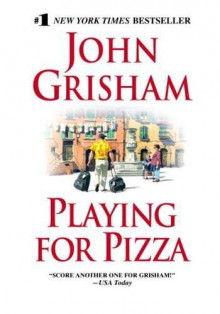 Playing for Pizza
Playing for Pizza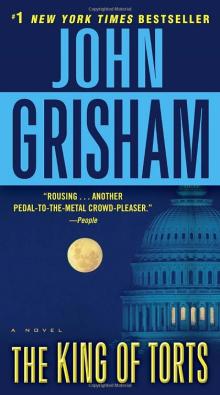 The King of Torts
The King of Torts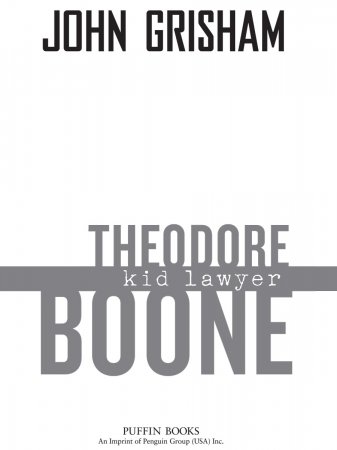 Theodore Boone: Kid Lawyer
Theodore Boone: Kid Lawyer Skipping Christmas
Skipping Christmas Ford County
Ford County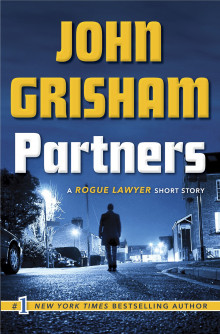 Partners
Partners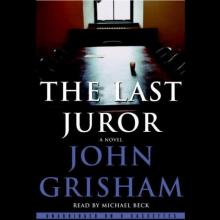 The Last Juror
The Last Juror A Painted House
A Painted House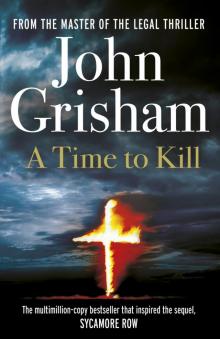 A Time to Kill
A Time to Kill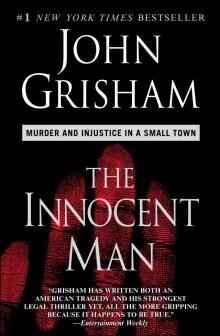 The Innocent Man
The Innocent Man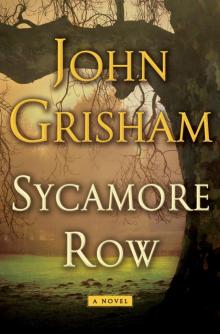 Sycamore Row
Sycamore Row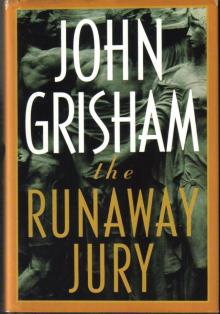 The Runaway Jury
The Runaway Jury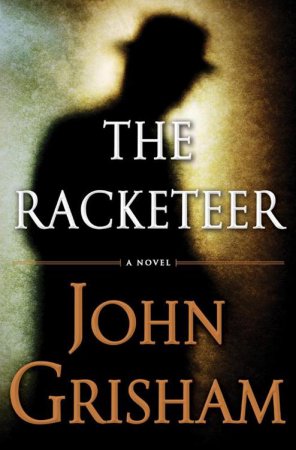 The Racketeer
The Racketeer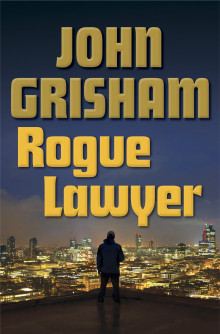 Rogue Lawyer
Rogue Lawyer The Appeal
The Appeal Camino Island
Camino Island Gray Mountain
Gray Mountain The Firm
The Firm The Testament
The Testament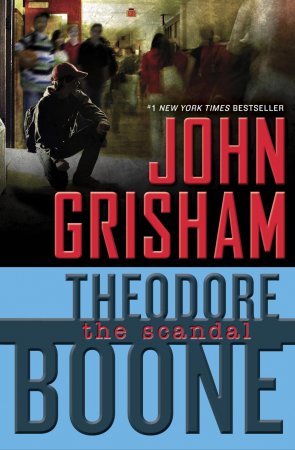 The Scandal
The Scandal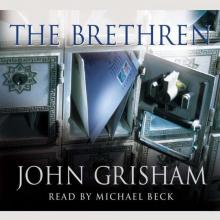 The Brethren
The Brethren Calico Joe
Calico Joe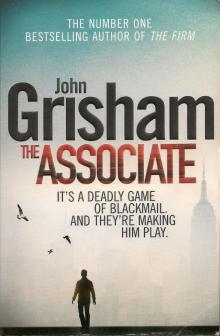 The Associate
The Associate The Pelican Brief
The Pelican Brief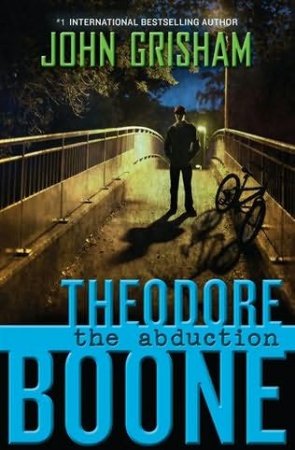 The Abduction
The Abduction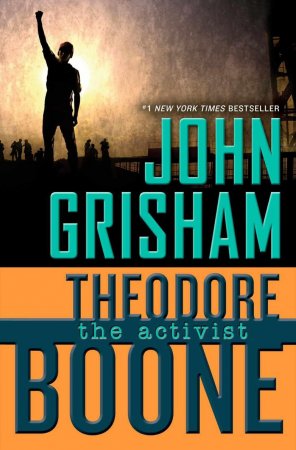 The Activist
The Activist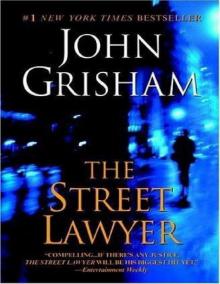 The Street Lawyer
The Street Lawyer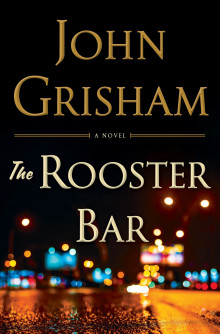 The Rooster Bar
The Rooster Bar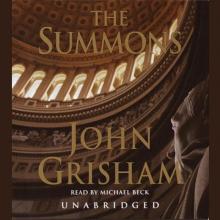 The Summons
The Summons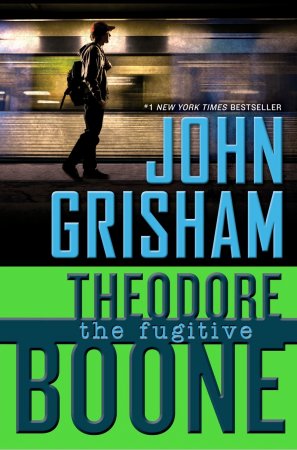 The Fugitive
The Fugitive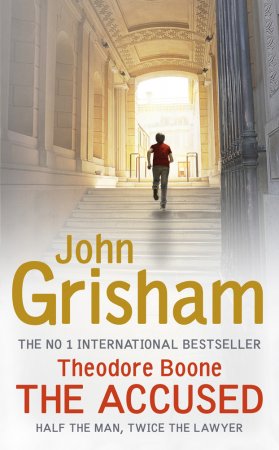 The Accused
The Accused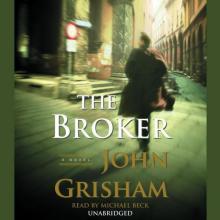 The Broker
The Broker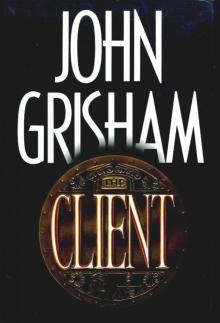 The Client
The Client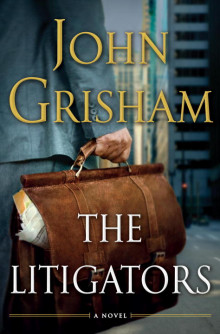 The Litigators
The Litigators The Whistler
The Whistler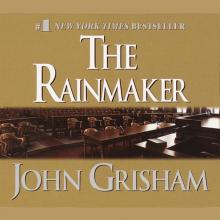 The Rainmaker
The Rainmaker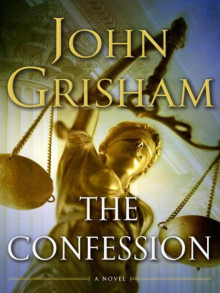 The Confession
The Confession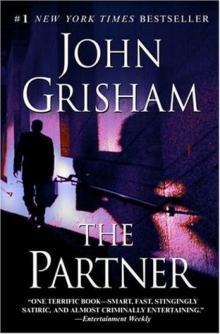 The Partner
The Partner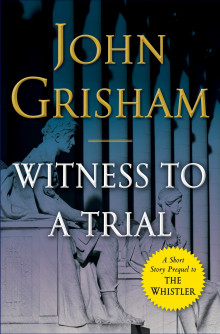 Witness to a Trial
Witness to a Trial Bleachers
Bleachers The Chamber
The Chamber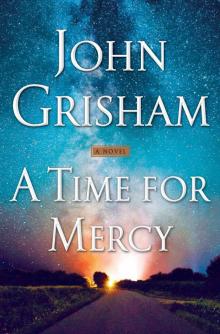 A Time for Mercy
A Time for Mercy The Reckoning
The Reckoning![[Theodore Boone 02] - The Abduction Read online](http://i1.bookreadfree.com/i/03/23/theodore_boone_02_-_the_abduction_preview.jpg) [Theodore Boone 02] - The Abduction
[Theodore Boone 02] - The Abduction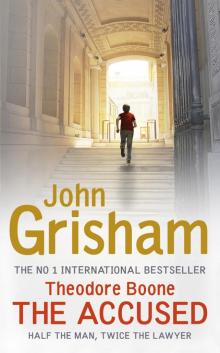 The Accused tb-3
The Accused tb-3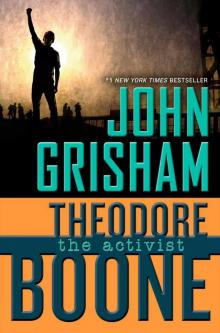 Theodore Boone: The Activist
Theodore Boone: The Activist Gray Mountain: A Novel
Gray Mountain: A Novel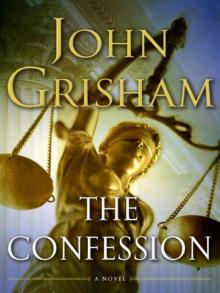 The Confession: A Novel
The Confession: A Novel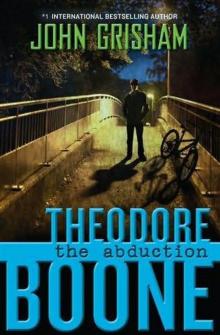 The abduction tb-2
The abduction tb-2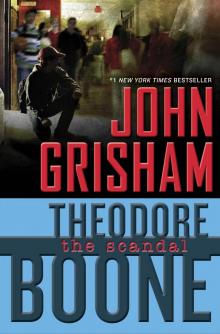 Theodore Boone: The Scandal
Theodore Boone: The Scandal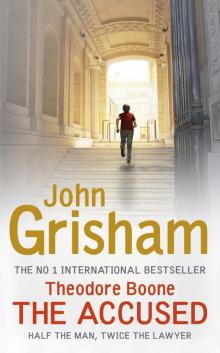 Theodore Boone: The Accused
Theodore Boone: The Accused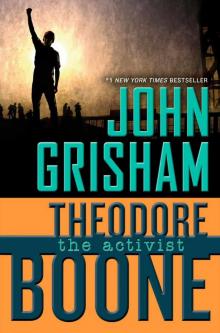 The Activist tb-4
The Activist tb-4 Ford Country
Ford Country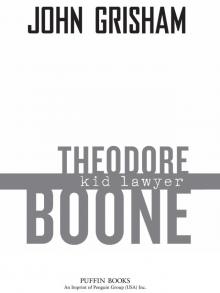 Kid Lawyer
Kid Lawyer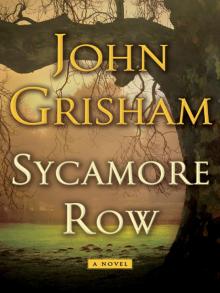 Sycamore Row jb-2
Sycamore Row jb-2 Chamber
Chamber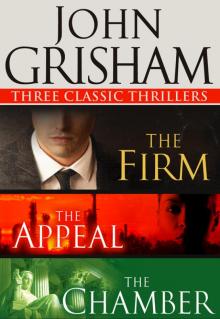 Three Classic Thrillers
Three Classic Thrillers